Статьи журнала - Siberian Aerospace Journal
Все статьи: 363
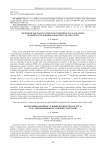
Статья научная
Plates, beams and shells with a non-uniform and micro-uniform regular structure are widely used in aviation and rocket and space technology. In calculating the strength of elastic composite structures using the finite element method (FEM) it is important to know the error of the approximate solution for finding where you need to build a sequence of approximate solutions that is connected with the procedure of crushing discrete models. Implementation of the procedure for grinding (within the micro-pass) discrete models of composite structures (bodies) requires large computer resources, especially for discrete models with a microinhomogeneous structure. In this paper, we propose a method of equivalent strength conditions (MESC) for calculating elastic bodies static strength with inhomogeneous and microinhomogeneous regular structures, which is implemented via FEM using multigrid finite elements. The calculation of composite bodies’ strength according to MESC is limited to the calculation of elastic isotropic homogeneous bodies strength using equivalent strength conditions, which are determined based on the strength conditions set for composite bodies. The MESC is based on the following statement. For all composite bodies V0 , which are such a homogeneous isotropic body V b and the number of p , if the safety factor nb of the body Vb satisfies the equivalent conditions of strength 2 pn1(1 ) nb (1 ) pn2 (1 ) , the safety factor n0 of the body V0 meets the defined criteria for strength n1 n0 n2 , where n1 , n2 specified, the safety factor n0 ( nb ) complies with the accurate (approximate) solution of elasticity theory problem is built for body V0 (body Vb ); (n2 n1) / (n2 n1) ; is the upper b error estimation of the maximum equivalent body stress V b , corresponding to approximate solution. When constructing equivalent strength conditions, i. e when finding the equivalence p coefficient, a system of discrete models is used, dimensions of which are smaller than the dimensions of the basic composite bodies models. The implementation of MESC requires small computer resources and does not use procedures for grinding composite discrete models. Strength calculations for bodies with a microinhomogeneous structure using MESC show its high efficiency. The main procedures for implementing the MESC are briefly described.
Бесплатно
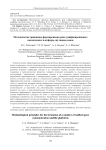
Статья научная
This article formulates the topical problem of formalizing the methodological principles of the search for a compromise between properties repeatability and modification (novelty) for the new models of space technology – communication satellites. The main methodological principles of development continuity are the unification of products and their component parts, means of technological equipment and technological processes, which allows to reduce their diversity and nomenclature. The order of the nomenclature of the articles and their component parts is achieved by developing parametric and type-size series with rationally chosen intervals between the adjacent members of the series according to a complex criterion, a link to the target product performance with the cost of creating the product. The research develops a project model and defines criteria for selecting the size type of a universal space platform. In designing a new spacecraft on the basis of a unified space platform (USP), there is a need to refine it to meet the resource requirements of the new payload (mass and energy consumption). The article sets out the methodological principles for assessing the range of effective applications of the universal space platform for the two most extreme cases of resource requirements (by mass and energy consumption) of the payload: the resources of the platform are excessive or insufficient. Methodological principles have been developed to form a number of unified space platforms. Using the methodological principles for the formation of a series of unified space platforms, the effectiveness ranges of USP were evaluated and the completeness of a number of geostationary communication satellites developed by “ISS” was assessed.
Бесплатно
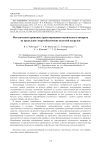
Methodological principles of space vehicle design for the maximum energy supply of the payload
Статья научная
The design of spacecraft at the initial stages is carried out in the presence of uncertainties in terms of parameters and conditions. The determination of design parameters is performed step by step: determination of the nominal values of design parameters, normalization of resource reserves (mass, volume, energy consumption) according to the design parameters to parry uncertainties, designing spacecraft for marginal resources. The operation of spacecraft with an electrical load switched on includes several stages: launching into the target orbit, putting into regular operation, regular operation for the intended purpose, decommissioning from the intended use in case of emergencies. The power supply system is designed to provide uninterrupted autonomous power supply to the onboard equipment in all modes and at all stages during the period of active existence of spacecraft, taking into account the presence of shadow zones of the orbit from the Earth and the Moon. In this article, the methodological principles for designing spacecraft for the maximum power supply of payload in the presence of uncertainties in parameters and conditions are developed. The mathematical models for calculating the parameters of the energy balance of spacecraft have been developed for various options for realizing the power of the session load, depending on the level of illumination of the orbit and the period of operation of spacecraft. The effectiveness of using the methodological principles of designing spacecraft for the maximum power supply of the payload, depending on the level of illumination of the orbit and the period of operation of spacecraft, has been evaluated. A technique has been developed for rationing reserves by spacecraft energy resources to parry uncertainties in terms of parameters and conditions, as well as the principles of its application when designing spacecraft for maximum payload power supply.
Бесплатно
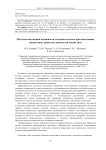
Methodology for assessing reliability of stand-bed systems in testing liquid throat engines
Статья научная
In the process of design processing of low thrust rocket engines great attention is paid to special bench test methodologies, technical use of benches, simulation measurements of the physical conditions of outer space, as well as the use of diagnostic studies and equipment for various physical studies and measurements. The efficiency of ground (bench) testing is ensured by simulating the conditions of full-scale tests and taking into account the influence of all operational factors affecting the reliability of the assessment of reliability indicators during design testing in ground conditions. A special place in the issues of achieving test efficiency is occupied by the requirements to ensure the accuracy and reliability of test results. A significant amount of testing during the development of engines should be carried out under the required vacuum conditions on test benches equipped with pressure chambers with vacuum systems. As a result of failures of some elements of a complex bench system, the quality of functioning deteriorates and the probability of successful performance of the functions that determine the output effect of the system decreases. Therefore, the task of evaluating the reliability of the systems of the stand for firing tests of rocket engines is reduced to elucidating the effect of element failures on the quality of operation and the output effect of each system. When testing, the given conditions must unambiguously determine the technical characteristics of the test stand, including the pressure chamber and vacuum equipment. Tests must be carried out with a sufficient degree of certainty. When assessing the dynamic characteristics in pulsed modes, significant errors are introduced by inertial forces. Methods for ensuring the dynamic similarity of the characteristics of the engine supply systems with fuel components on the stand and as part of the propulsion system of the spacecraft, including the correspondence of the hydraulic, inertial and wave characteristics of the mains, are considered. An analysis of the errors in the test results was carried out. The tasks of the methodology for calculating instrumental errors are formulated. An assessment of the frequency characteristics of bench hydraulic lines was carried out. Recommendations have been developed to improve the accuracy of measuring parameters during bench firing tests of low-thrust rocket engines.
Бесплатно
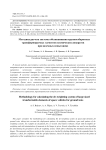
Статья научная
This paper considers the methodology for calculating the de-weighting system of spacecraft elements for ground tests, taking into account the deployment options, de-weighting conditions, types and options of de-weighting systems. An example of calculation for a 3-section solar battery without a beam with incomplete de-weighting and with minimization of moments in the hinges is given. Genetic algorithms are used as an algorithm for determining the parameters of the de-weighting system, which allows obtaining the minimum moments in the hinges. The moments and forces acting in the system were checked by plotting diagrams in the expanded state. In addition, a check for compliance with the specified distance, based on design constraints, between the points of application of the weighting forces was made.
Бесплатно
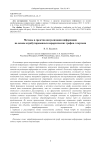
Статья научная
At present visualization of graph models is an inherent part of the processing of complex information about the structure of objects, systems and processes in many applications in science and technology, and at the market there are widely presented science-intensive software products, using the information visualization on the basis of graph models. Since the information to visualize is constantly growing and becoming more complex, more and more situations are arising, where classical graph models cease to be adequate. More powerful graph-theoretic formalisms are required and appear to represent information models with a hierarchical structure, since hierarchy is the basis of numerous methods for visual processing of complex big data in various fields of application. One of these formalisms is the so-called hierarchical graphs. This formalism allows to select a set of such its parts (so-called fragments) in the given classical graph that all elements of each selected fragment deserve a separate joint consideration, and all fragments of the selected set form a nesting hierarchy. At the A. P. Ershov Institute of Informatics Systems, the Visual Graph visualization system was constructed, which is based on hierarchical graphs and allows to explore complex structured big data through their visual representations. In many applications, objects modeled by graph vertices are complex and contain non-intersecting logical parts (so-called ports) through which these objects are in a relationship modeled by arcs. In the paper, the formalism of attributed hierarchical graphs with ports is introduced and new possibilities of the Visual Graph system for visualization of large structured data based on attributed hierarchical graphs with ports are considered.
Бесплатно
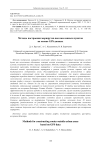
Methods for constructing routes outside urban areas based on GPS data
Статья научная
Route constructing methods include the task of finding the shortest trajectory between two or more ob-jects, which may vary depending on weather conditions, altitude coordinates, and other parameters. The methods discussed in the article allow constructing routes using GPS tracks for various fields of knowledge: designing routes within a city, region, country, or with remote sensing of the earth. The consid-ered algorithms are used in the field of environmental monitoring in emergency situations, to search for optimal data transmission routes in satellite systems and their validation, as well as in organizational and economic systems. The most widely used approaches for constructing routes are graph theory and search in the state space, where any trajectory between objects is given its own weight. However, there is still no system that allows to make a tourist route over rough terrain. The article discusses such methods as the Dijkstra, Levit, Floyd-Warshell algorithm, and it also compares their effectiveness in terms of running time and complexity. The aim of the work is to develop an algorithm for finding the shortest path and building a tourist route from a given point A to point B. This development will open up new opportunities for citizens to independently visit new interesting areas, actively spend their free time and get to know the surroundings of the city. The system has been tested on the territory of the Torgashinsky ridge, includes more than 38 route points located at a distance of more than 25 kilometers, and allows to build the desired routes within less than 15 milliseconds. At the same time, the system enters person’s coordinates, which are considered when constructing routes.
Бесплатно
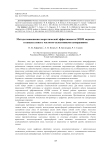
Статья научная
It is a fact that during data transmission, inter-symbol interference can occur, caused by the presence of multipath propagation and frequency-selective fading in the radio channel, which can significantly reduce the energy efficiency of communication systems. One of the methods to combat such effects, relevant today, is the use of OFDM modulation (OFDM – Orthogonal Frequency Division Multiplexing), which allows to flexibly change the data rate, reduce the frequency resource by improving the spectral efficiency, and also deal with frequency – selective fading and selective interference. However, there are channels that are particularly susceptible to inter-symbol interference, such as, for example, the tropospheric channel. Also, the problem of selective interference is particularly acute in near-field magnetic induction communication systems. For such channels, the use of OFDM modulation itself is not a panacea; the task of increasing the energy efficiency of an OFDM signal is an urgent one. This paper presents the key features of the OFDM mode of operation, which make it possible to increase the energy potential of the radio link in channels subject to intersymbol distortion. The results of modeling methods for PAPR reduction and digital predistortion for the linearization of the transmission path are presented. The practical significance of the work lies in the fact that the use of transmission path linearization methods will increase the maximum bandwidth of communication systems, primarily those using tropo-spheric, radio relay and near-field magnetic induction communication channels. At present, this issue is particularly acute, since there are no high-speed tropospheric stations with a data transfer rate of 50 Mbps in Russia. Increasing the throughput in tropospheric communication will provide communication to hard-to-reach settlements with difficult terrain. Also, the use of high-speed tropospheric communication is a cost-effective alternative to satellite communication, since its use does not require the lease of a satellite channel.
Бесплатно
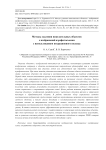
Methods of removing unwanted objects from aerial photography images using iterative approach
Статья научная
Removing objects from images refers both to the tasks of improving the quality of the image, for example, in the field of recovering damaged photographs, and the tasks of increasing safety when removing people or cars from aerial photography images with remote sensing of the earth. At the same time, methods for removing unwanted objects usually include two stages: selecting objects for removal and restoring texture in areas of the image. The first stage can be performed manually by users, if it is necessary to select specific objects, or automatically by training the model on different classes of objects. The problem of image restoration in the course of research was solved by various methods, the main one of which involves using of the values of neighboring pixels for rendering in distant areas. In recent years, methods using deep learning based on convolutional and generative neural networks have shown good results. The aim of the work is to develop a method for removing objects from aerial photography images with manually selecting objects and drawing textures in the processed area. The paper reviews modern methods of image restoration, among which the most promising are the use of deep learning networks, as well as texture analysis in the restored area. The proposed algorithm is based on an iterative approach when analyzing neighboring areas and gradually painting the restored area with a texture from neighboring pixels, taking into account the weight and contours of the boundaries. The article evaluates the effectiveness of the proposed method using the base of video sequences obtained from quadcopters and containing people and natural objects. At the same time, both an expert assessment was carried out, which showed good visual results, and a comparison of the quality of the algorithm with known approaches according to the PSNR metric, which showed the best results in the presence of a complex texture in the scene.
Бесплатно
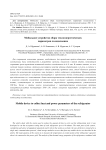
Mobile device to collect heat and power parameters of the refrigerator
Статья научная
The article deals with the system used to reduce the amount of time to carry out the refrigeration tests; it was developed to cut the acceptance testing time of each refrigerator up to 6-9 minutes. The main parts of the system , considering each piece of equipment separately and its role in the system as a whole, the way all devices connected to a single unit, communication protocol, cloud storage method to access data from any mobile device are described in the article. The main purpose of the system is to measure the temperature at certain points of the refrigerator capacitor when it is connected to the power grid. The analysis of the thermal energy properties of the refrigerator, combined with the analysis of the cooling speed of the refrigeration chambers (as well as the heating of the capacitor) makes it possible to understand whether each refrigerator corresponds to certain characteristics established by GOST. The article also presents the characteristics of the devices being used (temperature meter-regulator TRM 138, the ME110-224-1M electrical network measurement module).
Бесплатно
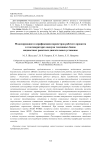
Статья научная
The main requirements for LRE gas generators are high stability of operation, ease of workflow management, as well as high efficiency of the generator gas. A particularly difficult task is to ensure the sustainability of the workflow. In addition to the probability of transverse vibrations in the in-chamber volume, due to the presence of additional volumes of various configurations and lengths attached to the reaction chamber, acoustic vibrations of complex longitudinal modes may occur. Most of the existing methods of testing a gas generator are criterion-empirical in nature and are based on the processing of experimental results, which does not always provide the required accuracy of calculating dynamic and thermal characteristics. The need for experimental and theoretical refinement of the calculation methods of thermodynamic processes of gas generators is an urgent task that will significantly reduce the material and time costs for preliminary design, testing and fine-tuning of modern models of engines and power plants of aircraft. Therefore, the calculation and analysis of the LRE gas generator is an important stage in the design and development of modern engine designs. Using the finite element method of the SOLID WORKS software package, a model of a two-zone gas generator for supercharging fuel tanks of the LRE was built. A study was conducted on modeling the workflow in a gas generator, visualization of thermodynamic processes in the product was built, numerical characteristics were obtained. The method of autonomous bench (firing) tests of fuel tank supercharger gas generators, the method of verification of numerical methods are considered.
Бесплатно
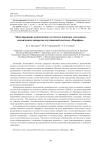
Modeling of composite mesh adapter for Marathon satellite system spacecraft output
Статья научная
Composite shells of rotation of mesh type are often used in the production of rocket and space technology as power elements of structures for various purposes, including spacecraft hulls. High specific values of mechanical characteristics of composites allow to manufacture structures with a high degree of weight perfection. Usually composite mesh structure has the form of a cylindrical or conical shell of circu-lar cross-section and consists of a system of spiral and circular ribs running along the midpoints of the areas between the nodes of intersection of spiral ribs. The discrete structure of the mesh shell is relatively simple and can be manufactured by the method of continuous winding of composite fibers, which is very technologically advanced, wellestablished and therefore currently widespread. A characteristic example of anisogrid cylindrical and conical shells is the spacecraft adapter for GLONASS satellites orbit launching, different variants of which are still produced in the workshops of Reshetnev JSC. The shells differ in dimensional parameters (diameters and lengths) and bearing capacity, but they are structurally identical, which allows to develop a universal and maximally automated modeling and calculation procedure. This is extremely important for composite elements of rocket-space technology, which have numerous variable parameters. The optimal combination of these parameters is determined in the process of performing a complex numerical experiment. The composite mesh adapter considered in this paper, designed for the Marathon satellite orbit, differs from the previously used shell structures by the shape of the cross-section, which in the main part is a regular octagon. The previously developed algorithm for modeling an anisogrid structure with a system of spiral and annular ribs formed by unidirectional carbon fiber-reinforced plastic fibers is used. Numerical in-vestigation of stability, stiffness and stress-strain state of the structure is carried out in the environment of an integrated package of finite element programs while varying the main parameters of its mesh structure formation.
Бесплатно
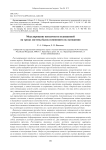
Статья научная
The problem of weightlessness simulation of beam systems suspended on inextensible cables is considered. Imitation of weightlessness means zeroing or reducing any selected force factor (for example, the reaction of the support or the moment in the support or joint), and the kinematic factor (deflection or angle of rotation). It is required to select the forces in the cables such that the sum of the squares of the deflections at the points of the elastic line of the beam is minimal. The problem is formulated as a nonlinear programming problem; the search for the minimum of the objective function with constraints, in the form of equilibrium equations, is carried out. In general, all equations written out for a geometrically variable system are linearly dependent. Parameters are selected from the system of equations, the vectors at which are entered into the basis, and the remaining parameters are considered free and are the coordinates of the objective function. The problem was reduced to the problem of quadratic programming without restrictions. Partial derivatives of coordinates give a system of linear algebraic equations that allows you to determine the coordinates taken as free parameters, and then calculate the coordinates entered into the basis. The reference plan of nonlinear optimization problems can have local minima; it is shown that for any initial basis, the optimal plan is the only one. To calculate the deflections of the beam, the method of initial parameters is used. Deflection, angle of rotation, additional angles of rotation in articulated joints are considered as initial parameters; as well as the reaction and bending moment. The continuum problem is transformed into a discrete one by limiting the number of points at which deflections are calculated. The objective function has a finite number of variables. It is determined which number of selected points on the elastic line of the beams is sufficient to ensure the convergence of the functions of deflections, angles of rotation, bending moments and transverse forces for the purpose of application to practical calculations. Optimization of deflections of a beam pivotally fixed, suspended on two cables with verification of solutions, change of basic variables and convergence study depending on the choice of the number of points at which deflections are calculated is performed. The deformation of systems of I-beams connected by hinges to each other, having linear weight in gravity conditions, is analyzed. To simulate weightlessness, the system is supported by six cables. The boundary conditions are considered: – rigid pinching; – hinge-fixed support, – sliding sealing; – free edge. Models of three-beam systems in the simulation of weightlessness, to a certain extent equivalent. The type of boundary condition affects the first beam to a greater extent; the tension forces of the cables equalize the deformed and stressed state in subsequent beams. Any of the considered systems with the presented boundary conditions can be converted into an equivalent one by changing the boundary force factors, setting torques or installing a spring with a given stiffness and adjusting the tension of the cables.
Бесплатно

Статья научная
The article contains the results of scientific research on modeling the technological parameters of electron beam welding. The modeling used a material VT-14 with a thickness of 0.16 cm. The purpose of the simulation is to improve the quality of the weld due to the optimal shape and the absence of defects in the form of pores and cracks. A concentrated energy source equivalent to an electron beam is used in the calculations. During the study of the thermal process of heating the material, the authors developed and tested criteria that allow optimizing welding parameters such as welding speed and the position of the focal spot relative to the surface of the heated part. In their calculations, the authors applied an original method of finding the welding speed and the coordinates of the focal spot according to the functionals of the thermal model. The algorithm developed by the authors was successfully tested on AMG-6 material with a thickness of 10 cm. In the process of modeling welding for large thicknesses, results have been obtained that must be taken into account when optimizing the welding parameters of products with large thickness. The relevance of the presented material is confirmed by the demand for the quality of the technology of welding structures with an electron beam. Research by the authors of this direction will significantly expand the possibilities in the application of electron beam technology for rocket and space technology.
Бесплатно
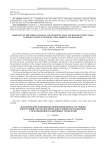
Статья научная
One of the promising areas for improving the methods of manufacturing structural elements of rocket and space technology is the use of selective laser melting technology which represents a unique opportunity to manufacture metal products by melting powder and producing a one-piece solid phase structure. However, pores and other structural defects can appear in the formed element during laser sintering which causes a decrease in the strength characteristics of the parts produced. An important step in the additive technologies introduction is the development of methodology for the preliminary prediction of the strength characteristics of manufactured structural elements under the influence of mechanical loads with the help of mathematical modeling. The methodology for estimating the material strength reduction of a rocket-space technology element obtained using additive technologies by simulating a porous structure and calculating the characteristics of the stress-strain state is presented. The proposed mathematical model and the methodology for calculating the specimen loading on the basis of the distortion energy theory allow calculating the stress-strain state in the process of numerical simulation for different values of the pore diameter. The reduction in yield strength due to the material porosity of the part is estimated using a coefficient equal to the ratio of equivalent stresses arising when a load is applied to a specimen manufactured using traditional and additive technologies. The value of the introduced coefficient characterizes the structure of the grown product and is considered as a function of the random arrangement of pores in the specimen under study. The appearance of pores is the result of a combination of factors: the composition and dispersion of the original metal powder, feed rate, removal distance and laser power during sintering, part orientation and sintering direction, the height of the level of powder deposited on a special base before sintering, etc. The paper evaluates the reduction in strength for the working part of a series of tensile test specimens grown from metal powder of different dispersity. The non-linear nature of the dependence of the yield strength on the particle diameter of the original metal powder is established. The maximum value of the yield strength corresponds to the specimen with the minimum value of the total surface area of the pores.
Бесплатно
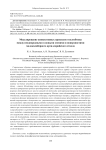
Статья научная
The current models of aviation artillery weapons (AAW) are the pulsed heat engines that convert the energy of a powder charge into the energy of highly compressed and heated powder gases (hereinafter referred to as gases), which, when expanding, perform work on communicating kinetic energy to the projectile. In the context of artillery science, aviation artillery weapons and ammunition are structured as a system that interacts with heat sources and the environment, sequentially completing thermodynamic cycles. The main element that is most intensively subjected to thermophysical loads and has a significant impact on the combat qualities and cost of aviation artillery weapons is a small-caliber artillery barrel (hereinafter referred to as the barrel). As a result, the problem of determining the temperature field of the barrel is one of the central problems of designing aviation artillery weapons and optimizing firing modes. The successful solution of this problem largely depends on the accuracy of modeling the processes of heat transfer to the channel and from the outer wall of the barrel during firing. At the same time, an adequate synthesis and calculation of the relations describing the phenomenon of convection accompanying the shot is difficult, which is due to the presence of phase transformations in the state of gases; the simultaneous presence of supersonic and subsonic zones in the solution regions; the existence of laminar, turbulent flows and other non-linear formations. The aim of the work is to develop a relatively simple and acceptable for engineering practice mathematical model of heat transfer inside and around the barrel with near-wall coolant flows (hereinafter referred to as the model). Achieving the goal of the work is carried out by a concentrated choice of criterion equations of the apparatus of thermodynamic similarity, corresponding to the geometric and physical conditions for the uniqueness of the processes of loading the barrel. The introduction of functions that take into account the dependence of the thermophysical properties of gases on temperature made it possible to increase the accuracy of determining the parameters of heat transfer during a shot by 19% in comparison with the known results. The developed model can be used in applied calculations related to determining the thermal state of the barrel. The specialization of the object of study does not exclude the possibility of refining the model for the purpose of mathematical representation of thermal effects in thermally stressed structures of complex shape.
Бесплатно
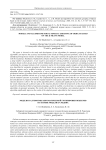
Models and algorithms for automatic grouping of objects based on the k-means model
Статья научная
The paper is devoted to the study and development of new algorithms for automatic grouping of objects. The algorithms can improve the accuracy and stability of the result of solving practical problems, such as the problems of identifying homogeneous batches of industrial products. The paper examines the application of the k-means algorithm with the Euclidean, Manhattan, Mahalanobis distance measures for the problem of automatic grouping of objects with a large number of parameters. A new model is presented for solving problems of automatic grouping of industrial products based on the k-means model with the Mahalanobis distance measure. The model uses a training procedure by calculating the averaged estimate of the covariance matrix for the training sample (sample with pre-labeled data). A new algorithm for automatic grouping of objects based on an optimization model of k-means with the Mahalanobis distance measure and a weighted average covariance matrix calculated from a training sample is proposed. The algorithm allows reducing the proportion of errors (increasing the Rand index) when identifying homogeneous production batches of products based on the results of tests. A new approach to the development of genetic algorithms for the k-means problem with the use of a single greedy agglomerative heuristic procedure as the crossover operator and the mutation operator is presented. The computational experiment has shown that the new mutation procedure is fast and efficient in comparison with the original mutation of the genetic algorithm. The high rate of convergence of the objective function is shown. The use of this algorithm allows a statistically significant increase both in the accuracy of the result (improving the achieved value of the objective function within the framework of the chosen mathematical model for solving the problem of automatic grouping), and in its stability, in a fixed time, in comparison with the known algorithms of automatic grouping. The results show that the idea of including a new mutation operator in the genetic algorithm significantly improves the results of the simplest genetic algorithm for the k-means problem.
Бесплатно
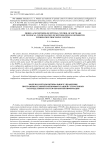
Статья научная
The article discusses formalization of the problem of heterogeneous distributed information processing systems (HDIPS) software and hardware configuration management. A formal description of possible optimality criteria for the HDIPS software and hardware configuration is given. The HDIPS model in terms of queuing theory is proposed. The problem of allocating the HDIPS computational resources is formulated as a transport problem according to time criterion with atomic needs. The algorithm for solving this problem is proposed and the boundaries of its applicability to the HDIPS are determined. To meet the selected optimality criterion, the analysis of the HDIPS software and hardware configuration applying its formal model, using the queuing theory methods is presented. HDIPS is presented as a queuing network, where each computing node and route control unit is a mass service system. The problem of computing resource allocation in HDIPS is presented as a transport problem according to the time criterion with atomic needs. The least time algorithm for indivisible needs takes into account the indivisibility condition.
Бесплатно
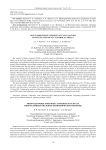
Multi-grid finite elements in calculations of multilayer oval cylindrical shells
Статья научная
The method of finite elements (FEM) is actively used in calculations of composite shell constructions (rotation shells, circle and oval cylindrical shells), which are widely used in space-rocket and aviation equipment. To calculate multi-layer oval cylindrical shells three-dimensional curvilinear Lagrange multi-grid finite elements (MGFE) are suggested. When building a k-grid finite element (FE), k nested grids are used. The fine grid is generated by the basic split of MGFE that takes into account its complex heterogeneous structure and shape. On k-1 large grids the move functions used for decreasing MGFE dimension are determined. The stress-strain state in MGFE is described by the elasticity theory three-dimensional task equations (without introduction of additional hypotheses) in local Cartesian coordinates systems. The procedure of building shell-type Lagrange MGFE with the use of Lagrange polynomials presented in curvilinear coordinate systems is demonstrated. With the size reduction of discrete models MGFE have constant thickness equal to the thickness of the shell. The Lagrange polynomials nodes coincide in thickness with the MGFE large grid nodes and are located on the shared borders of different module layers. The use of such MGFE generates approximate solutions sequences that uniformly and quickly converge to precise solutions. The main advantages of MGFE are as follows: they form discrete models with the dimension 102–106 times smaller than the basic models dimension and they generate small error solutions. Examples of calculations are given for four- and three-layer oval shells of various thickness and shape under both uniform and local loading with the use of 3-grid FE. Comparative analysis of the obtained solutions with the solutions built with the help of the software package ANSYS shows high efficiency of the suggested MGFE in calculations of multi-grid oval shells.
Бесплатно
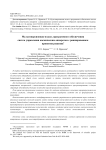
Multiversion model of software control systems for space vehicles with range of decision-making
Статья научная
The paper presents a multi-version model with ranking of alternatives in order of preference, taking into account the dependence of the attributes in the design of software for spacecraft control systems of various classes. The applied software with a set of algorithms, based on the general scheme of the method of branches and borders allow determining the exact solution of the optimization problem. To achieve the highest reliability of the software component of spacecraft control systems built with the use of multi-version programming methodology, a large number of versions of software modules are combined into a single structure. While software complexes even without introduction of redundant elements are characterized as complex systems, there is no need to speak about wide use of enumerative methods for their formation. Using the proposed modified method of ordered preference through similarity to an ideal solution, will allow to solve the problem of choosing the best computing system from a number of available systems. This approach is becoming increasingly possible because of the tremendous progress in computing design and manufacturing technology. Even the so-called personal computers provide computational capabilities that some time ago seemed impossible even for computers representing a much more powerful class of computing equipment - supercomputers.
Бесплатно

